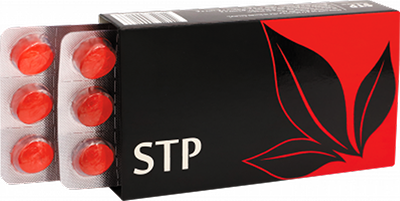
Regular endurance exercise, such as running, swimming, cycling, or brisk walking, prompts a remarkable series of physiological adaptations throughout the body. These changes enhance the body's efficiency, resilience, and overall health, leading to numerous long-term benefits.
Cardiovascular System Adaptations
- Cardiac Hypertrophy (Athlete's Heart): The heart muscle, particularly the left ventricle, becomes stronger and larger. This allows it to pump more blood per beat (increased stroke volume), both at rest and during exercise.
- Lower Resting Heart Rate: As the heart becomes more efficient, it needs fewer beats to circulate the same amount of blood, leading to a lower resting heart rate.
- Increased Blood Volume: Endurance training leads to an increase in total blood volume, including plasma volume and red blood cell count, enhancing oxygen transport capacity.
- Improved Capillary Density: New capillaries (tiny blood vessels) grow in the muscles, facilitating more efficient delivery of oxygen and nutrients to working muscles and removal of metabolic waste products.
- Enhanced Vascular Elasticity: Blood vessels become more elastic and less stiff, contributing to improved blood flow and helping to maintain healthy blood pressure.
- Reduced Risk of Cardiovascular Diseases: These adaptations collectively lower the risk of hypertension, coronary artery disease, heart attack, and stroke.
Respiratory System Adaptations
- Increased Ventilatory Efficiency: The respiratory muscles (diaphragm and intercostals) become stronger, allowing for deeper and more efficient breaths. This means more air can be moved in and out of the lungs with less effort.
- Improved Oxygen Extraction: The body becomes more efficient at extracting oxygen from the air in the lungs and transferring it to the bloodstream.
- Increased VO2 Max (Maximal Oxygen Uptake): This is the maximum rate at which the body can consume and utilize oxygen during intense exercise. Endurance training significantly improves VO2 max, indicating enhanced aerobic fitness.
Musculoskeletal System Adaptations
- Mitochondrial Biogenesis: Muscle cells increase the number and size of mitochondria, the "powerhouses" of the cell, which are responsible for aerobic energy production. This enhances the muscles' ability to use oxygen to produce ATP (energy).
- Increased Myoglobin Content: Muscles increase their content of myoglobin, a protein that stores oxygen within muscle cells, making it readily available for aerobic metabolism.
- Enhanced Enzyme Activity: The activity of enzymes involved in aerobic metabolism (e.g., Krebs cycle, electron transport chain) increases, improving the efficiency of energy production from fats and carbohydrates.
- Improved Muscle Endurance: Muscles become more resistant to fatigue due to enhanced aerobic capacity.
- Increased Bone Density: Weight-bearing endurance activities (like running, brisk walking) stimulate osteoblasts, leading to stronger bones and reduced risk of osteoporosis.
- Stronger Connective Tissues: Ligaments, tendons, and cartilage adapt to the stress, becoming more resilient and reducing the risk of injury.
Metabolic Adaptations
- Improved Fat Metabolism: The body becomes more efficient at burning fat for fuel, especially during lower-intensity exercise. This spares glycogen stores and can contribute to weight management.
- Enhanced Glucose Uptake and Insulin Sensitivity: Muscles become more effective at taking up glucose from the blood, even without insulin, and insulin sensitivity improves. This is crucial for blood sugar regulation and reducing the risk of type 2 diabetes.
- Improved Cholesterol Profile: Regular endurance exercise often leads to an increase in beneficial High-Density Lipoprotein (HDL) cholesterol and a decrease in harmful Low-Density Lipoprotein (LDL) cholesterol and triglycerides.
- Weight Management: By increasing calorie expenditure and improving metabolism, endurance exercise is highly effective for managing body weight and reducing body fat.
Nervous System and Psychological Benefits
- Neurogenesis: Exercise can promote the growth of new brain cells, particularly in areas associated with memory and learning.
- Improved Cognitive Function: Enhanced blood flow to the brain and other adaptations can lead to improved memory, attention, problem-solving skills, and overall cognitive performance.
- Reduced Stress and Anxiety: Endurance exercise triggers the release of endorphins and other neurotransmitters, acting as natural mood elevators and stress reducers.
- Improved Mood and Reduced Depression: Consistent exercise can significantly alleviate symptoms of depression and anxiety.
- Better Sleep Quality: Regular physical activity helps regulate the body's circadian rhythm, leading to more restful and consistent sleep.
Immune System Adaptations
- Enhanced Immune Function: Moderate endurance exercise can boost the immune system by increasing the circulation of immune cells, potentially reducing the frequency of common infections. (Note: Overtraining can temporarily suppress immune function).
- Reduced Systemic Inflammation: Chronic inflammation is linked to many diseases. Regular exercise helps to reduce markers of chronic inflammation in the body.
In essence, regular endurance exercise transforms the body into a more efficient, resilient, and healthier machine, enhancing its ability to perform physical tasks, combat disease, and improve mental well-being.
Click for more info
Back to Table of Contents
ADVERTISEMENT

Stop Aches & Recover Faster with STP!
Feeling achy and uncomfortable after overexertion? STP by APLGO is your answer! These powerful Acumullit SA® lozenge drops deliver a carefully chosen blend of nutrients to stimulate your body’s natural repair process, supporting swift recovery from physical stress, repetitive movements, and everyday fatigue. Experience a calming effect and rejuvenate your body, helping you maintain healthy circulation and soothe nervous tension for optimal well-being.
